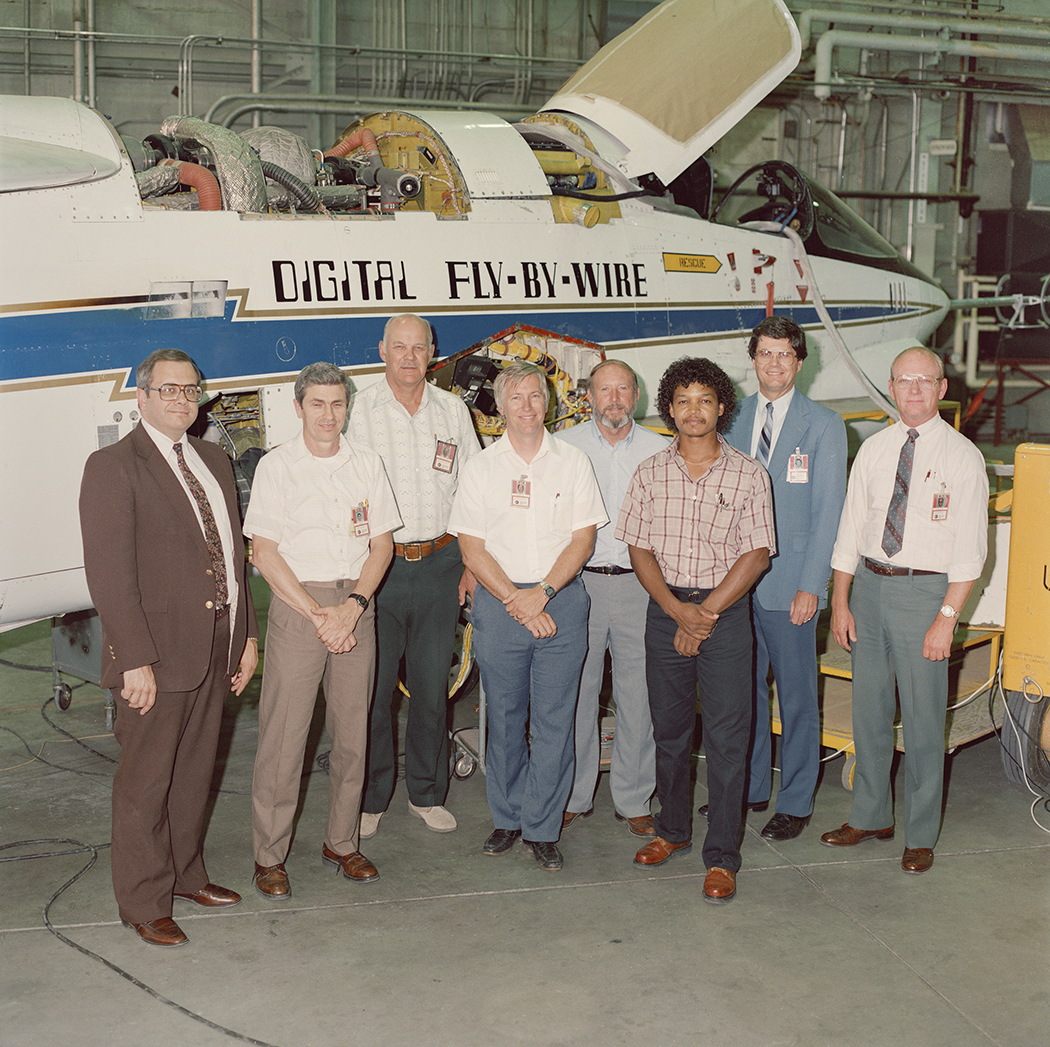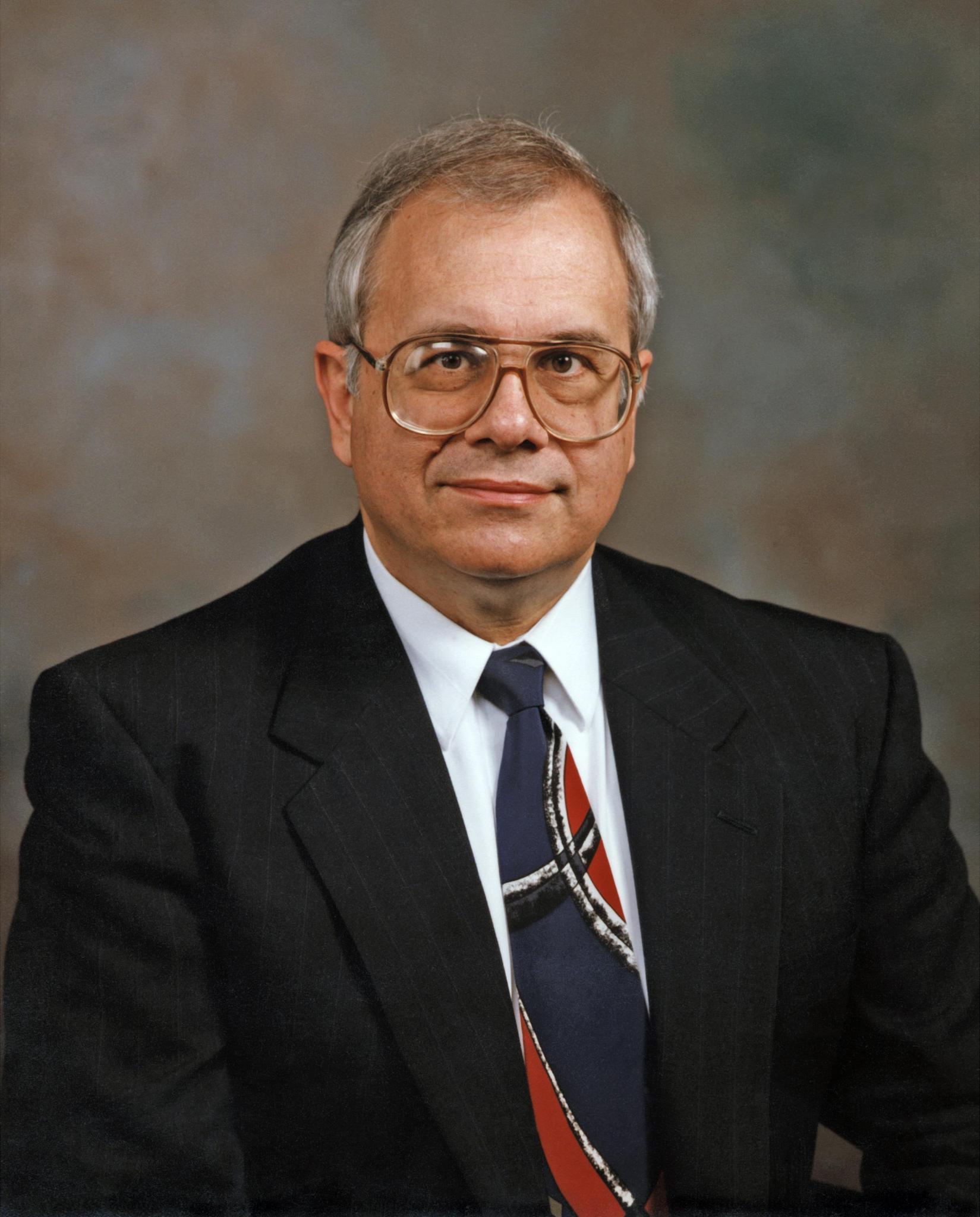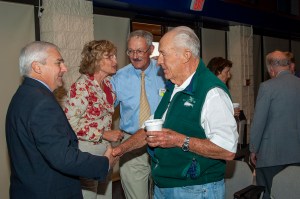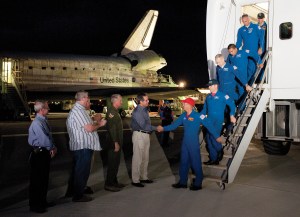
The 75th Anniversary is a time to look back for a moment, and then to do even better in the future. When I completed my service to NASA and to the United States at AFRC, I left thinking about the wonderful people I was fortunate to know and work with. Although there were long days and long weeks, the 34 years passed quickly. Note well and make every day a good day.
My principal recollections are about the incredible people that make up this valuable national facility. Women and men in every office, lab, hangar, shop, guard house and cockpit somehow melded together to create a human-powered team that did extraordinary things. Their efforts directly led to flight of experimental vehicles and systems that were brought to life through hard work, very often overcoming daunting challenges that are similar to running an obstacle course never seen before, with human life consequences.
What I saw over and over again was commitment, loyalty, persistence, and passion for the job they had. They had families of course, but passing through the gate, the work they did here WAS their life. The projects, discoveries, advancements, ‘firsts’ celebrated by these people at the Flight Research Center (now NASA Armstrong) are recorded in history books and in photos on the wall. Every single person who works there now, (or connects electronically from home!) is an essential part of the NASA Armstrong team. When any of you is asked, “What do you do – what is your line of work,” your answer should be, “I am in flight research.” Your roles vary, but the objective is the same.
I started as a GS-7 engineer from the University of Wisconsin. About 10 days after getting married in 1964, my wife Mary and I set off to the small town of Lancaster (California) in our 1960 Corvette (I should have kept it). I had only talked with two people at ‘FRC,’ at that time, Jack Fischel (deputy director of Research to Joe Weil) and James Penta, in Personnel. I took home less than $200 every 2 weeks. Even with a furnished 3-bedroom house at $85/month, there was little left after two weeks. Not satisfied with your pay?
But the thrill of being employed at the Flight Research Center was the job of a lifetime. Herm Rediess, was my first Section Chief. He earned his doctorate degree at the Massachusetts Institute of Technology and went on to hold technical and senior leadership positions in industry and government. He continued to influence me, and he still does.
Don Berry was appointed the new chief of the Airborne Simulation Section. He was the model mentor, teaching, guiding, correcting, encouraging, and giving unselfishly of his time and Air Force technical experience. He assisted me in writing my first NASA technical note (report) but refused to have his name on the report. Delores Berry talks with us to the present day. The bonds made in our line of work, taking experimental aircraft to and beyond the boundaries of knowledge and experience is not really a job, it is the exercise of human pioneering and exploration. It is a privilege to be part of it.
Mentors are the unheralded heroes, keeping an unbroken link of technical, process, teamwork, and safety culture at the center. The Henry Arniaz Mentorship award honors Henry and honors today’s mentors.
I remember well each of my section office mates. They were all first-class people at the center and in subsequent nationally important jobs. Joe Baumbach told me how things “really worked” at the FRC, influenced me to get a private pilot’s license, and introduced me to many people that I should get to know.
A senior simulation engineer, John Perry, spent hours with me explaining real-time aircraft simulation, essential to my first project assignment on the JetStar Airborne Simulator. I got to do research experiments under the guidance of Don Berry and long-time supervisor, Dwain Deets. I also flew as flight test engineer, mentored by fantastic pilots, Stan Butchart, Don Mallick, and Fitz Fulton. JetStar Crew Chief Gene Dymowski taught me so much about airplanes, safety, and procedures…that I never forgot.
Today I treasure every day I spent at the center. The film ‘Carpe Diem’ is a favorite. ‘Seize the day.’ There are new frontiers to explore. You can be proud of your technical accomplishments. But I can say from long experience that what you will take with you most, are the friendships and memories of the people that you worked with to ‘push the outside of the envelope.’
One personal note about the center’s two namesakes, Dr. Hugh Dryden, and Neil Armstrong. Dryden died the year after I arrived at the center. I have read some of his National Advisory Committee for Aeronautics reports. He epitomizes the devotion to understanding the most difficult aspects of compressible aerodynamics and was a foremost advocate of flight research. I did get to know Neil pretty well. He had personal loss in his life, and some harrowing flight experiences (read about Gemini 8, an X-15 flight over Los Angeles and a Lunar Landing Training Vehicle flight). But this former FRC pilot was incredibly smart and was an excellent pilot. All who knew him, agree that on July 24, 1969, there was no one better you would have taking control of the Lunar Module for a lunar landing. Also, he had the best guy in the ‘right seat,’ Buzz Aldrin. They were the first crew on the Moon. AFRC contributed to that too. One more thing for all the ‘Type A’ people out there – Dryden and Armstrong were genuinely humble.
The Flight Research Center could not have succeeded without strong NASA Headquarters support. I remember well Bill Aiken, Jack Levine, Cecil Rosen, John McCarthy, and Bob Whitehead; and Administrators Beggs, Fletcher, Truly and Goldin, and Deputy Administrator Jack Dailey. The cooperation and collaboration of the Air Force Flight Test Center/Air Force Test Center at Edwards Air Force Base was also essential to the center. I especially thank Gen. Roy Bridges and Gen. Richard Engel for their support of the center.
Some of the uncountable people I was just plain lucky to work with are in the retiree’s spreadsheet maintained by Carol Reukauf. I have been saddened by the loss in this life of many colleagues. These people led us to victory in the air, in war, and in flight research.
I may not be able to make personal contact with the hundreds on the list, and many others. But if you read this, know that I remember you and your indelible part in bringing the NASA Armstrong Flight Research Center to its 75th year. I also salute David McBride and Patrick Stoliker and wish them and the center … GODSPEED.
Kenneth Szalai
Former Center Director
NASA’s Armstrong Flight Research Center




























